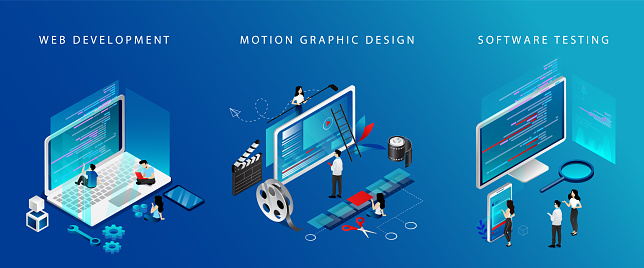Software Testing vs. Web Development: The Dynamic Duo of Delivering Quality Web Applications
In the fast-paced digital world, web development and software testing are two critical pillars of ensuring the delivery of high-quality web applications. While web development focuses on building the functionalities and features that make a website or web application come to life, software testing ensures that the final product meets its intended requirements and functions flawlessly. In this blog post, we will explore the key differences between software testing and web development, and how they work together as a dynamic duo to create exceptional web experiences for users.
Understanding Web Development: Building the Digital Frontier
Web development is the process of designing, creating, and maintaining websites and web applications. It encompasses various aspects, including frontend development, backend development, and database management, to bring a web project to fruition.
- Frontend Development: Frontend developers work on the user interface (UI) and user experience (UX) aspects of a website. They use technologies like HTML, CSS, and JavaScript to design and build the visual elements and interactive features that users interact with.
- Backend Development: Backend developers focus on the server-side of the web application. They create the logic and functionality that enable the frontend to communicate with databases and perform various operations.
- Database Management: Database administrators manage the storage and retrieval of data used by the web application. They ensure data integrity and optimize the performance of database queries.
Web development is a complex and iterative process, involving collaboration between designers, developers, and other stakeholders. The end goal is to create a functional and visually appealing web application that meets user needs and business objectives.
http://informationarray.com/2023/07/21/software-testing-vs-system-testing-unraveling-the-layers-of-quality-assurance/
Understanding Software Testing: Ensuring Reliability and Performance
Software testing, including web application testing, is the process of evaluating a software application to identify defects, validate functionality, and ensure it performs as expected. It is a critical phase in the web development lifecycle that aims to enhance the reliability and performance of the web application.
- Functional Testing: Verifying that the web application’s functionalities work as intended and meet specified requirements.
- Usability Testing: Evaluating the user experience to ensure the application is user-friendly and intuitive.
- Performance Testing: Assessing the application’s speed, responsiveness, and stability under varying loads.
- Security Testing: Identifying vulnerabilities and weaknesses to ensure the application is protected against potential threats.
- Compatibility Testing: Validating that the web application works correctly across different devices, browsers, and operating systems.
Software testing involves a combination of manual testing and test automation. Testers meticulously validate the web application’s features, ensuring that it delivers a seamless user experience and meets high standards of quality.
The Dynamic Duo: Collaborative Excellence
Web development and software testing are inseparable partners in the quest for exceptional web applications. Their collaboration is critical for delivering successful digital experiences to end-users.
- Iterative Improvement: Throughout the development lifecycle, testing provides continuous feedback to developers, enabling them to address issues promptly and iteratively improve the application.
- Enhanced User Experience: Testing ensures that the web application is thoroughly evaluated from the user’s perspective, resulting in an optimized user experience and higher customer satisfaction.
- Security and Reliability: Software testing identifies potential vulnerabilities, and in collaboration with development, appropriate security measures can be implemented to safeguard user data and the application’s integrity.
- Speed to Market: Effective testing helps catch and rectify defects early, reducing the need for extensive rework and ensuring a quicker time to market for the web application.
- Continuous Improvement: Web development and testing teams work collaboratively to implement a continuous improvement approach, refining the application over time to meet evolving user needs.
Web development and software testing are symbiotic forces that drive the creation of exceptional web applications. Web development brings the digital vision to life, while software testing ensures the final product is reliable, user-friendly, and performs flawlessly.
The collaborative excellence of web development and software testing enables businesses to deliver top-notch web experiences to their users, staying ahead in the competitive digital landscape. By embracing a harmonious integration of these two aspects, development teams can create web applications that leave a lasting impression on users and drive business success in the digital world.









